Assignment Problem 1: Life cycles and Harbourages
Part I: You have been directed to provide pest identification details at the shop/dwelling of Ms Reti. She is particularly concerned with a range of pests that include cockroaches, spiders, ants, carpet pests, stored product pests and rodents.
You will need to prepare a written pest inspection report after your inspection. The report must include at least one (1) common species from each of the following groups:
- cockroach
- spider
- ant
- rodent.
(i.e.) you need FOUR (4) species.
The report must also include one (1)common species from at least one of the following groups:
(OR)
That totals to at least FIVE (5) species.
For example, you may prepare your report using the following pests:
a) German cockroach
b) Redback spider
c) Black house ant
d) House mouse
e) Indian meal moth
Part II:
1. Naming and classification:
a) All living organisms are classified according to structural characteristics at seven (7) different levels. Name the seven (7) levels.
b) There are certain rules when writing scientific names. What are these rules?
c) Write the scientific name for the American cockroach using these rules.
d) Is the following scientific name correct: BlattellaGermanica? Explain the reasons for your answer.
e) If a scientific name was written as Musca sp., what does the sp. mean?
f) How many legs do the members of Class Insecta have?
g) How many body segments do the members of Class Insecta have?
2. Structure of insects and their function
a) Name the three (3) main body parts of an insect and describe their functions.
b) Name the two (2) major types of eyes that are common to insects and describe the types and functions they perform.
c) Describe three (3) different ways insects communicate.
d) Name three (3) different types of insect mouths and provide an example for each.
e) Why do insects moult?
f) Describe two (2) functions that pheromones perform.
g) How do insects breathe?
h) Describe the circulatory system of insects.
i) Name three (3) basic types of metamorphosis and give an example of an insect that undergoes each type.
Part C: Identification and treatments:
Ms Reti phoned you to come out and see her again as she is rather disturbed about some unusual finds after the last treatment.
1. These were found both inside and outside the shop.
a) What are they?
b) What advice will you give Ms. Reti?
2. As Ms Reti was removing firewood that is stacked against the house, she found these 'little crawlies'.
Organism A is pale cream in colour, darker head and beaded antennae.
Organism B is up to 19mm long, pale brown to dull blue in colour, 7 pairs of legs, found on damp ground or under rotting debris.
a) What are they?
b) What advice will you give Ms Reti about Organism A?
c) What advice will you give Ms Reti about Organism B?
3. Ms Reti was in her office while she was working on some files. She found these creatures between papers in a musty drawer. They are 1-2 mm long, wingless, pale grey in colour.
a) What are they?
a) What advice will you give Ms. Reti?
4. Ms Reti's uncle was in Hong Kong for a visit. After the trip he came to stay for a couple of weeks. Since then she found 'these ugly things' in the spare bedroom. They are 4-5 mm long, reddish-brown in colour, flat with an oval-shaped body.
a) What are they?
b) What advice will you give Ms. Reti?
5. In Ms Reti's bulk storeroom you noticed dark greasy marks around the corners of some shelving. You found droppings and noticed considerable damage being done to some bags and boxes containing foodstuffs. The smaller droppings you discovered near bird seeds.
Droppings of Pest A is 3-4 mm Droppings of Pest B is16-18mm
Pest A
Pest B
Identify pest
Describe where their habitat, habits and range of foraging might be.
6. In her bulk store Ms Reti has some 10 kg bags of bird seed. She pointed out to you that something is crawling out of the packs.
a) What are these pests?
b) How will you handle the situation?
Assignment Problem 2: Calculations
Question 1: Use the plan below and the 'Bugkill' label.
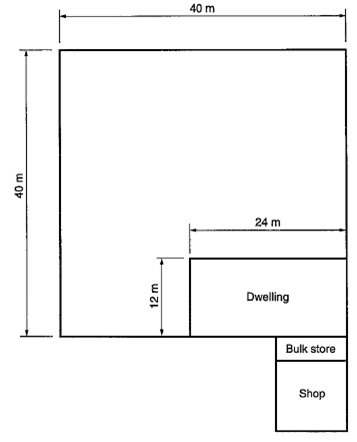
You are required to carry out a flea treatment job:
1. Using the 'Bugkill' label
a) How much mix will you use in the yard (the yard is all dry and dusty)?
b) How much concentrate will you use in the yard?
c) Why can't you use 'Bugkill' inside the dwelling?
2. Using the 'Superkill' label:
a) How much mix will you use in the dwelling?
b) How much concentrate will you use in the dwelling?
Question 2:
1. Using the 'Bugkill' label:
a) You need to spray 210 m2 for mosquitoes.
i. How much mix is required?
ii. How much concentrate will you use?
b) You need to prepare 30 litres of mix to control cockroaches. How much concentrate will you use?
c) The 4 external walls of this shed must be sprayed for flies.
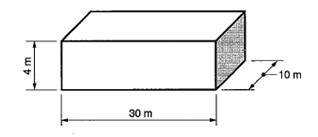
The dimensions of the shed are shown in the diagram.
i. How much mix is required?
ii. How much concentrate will you use?
iii. Why can't you use this product to treat for FLEAS internally on the concrete floor of the shed?
d) This yard must be treated for fleas.
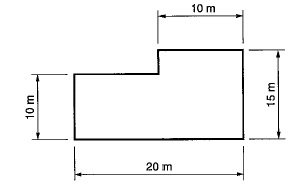
i. How much mix will be required?
ii. How much concentrate will you use?
e) The 4 external walls of this shed must be sprayed for mosquitoes.
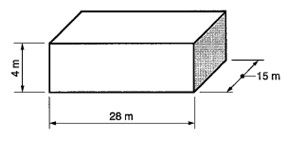
The dimensions of the shed are shown in the diagram.
i. How much mix is required?
ii. How much concentrate will you use?
f) You need to prepare 25 litres of mix to control ants. How much concentrate will you need?
Question 3:
1. By using the 'Superkill' label:
a) You have to treat 200m2 for fleas (initial treatment).
i. How much mix is needed?
ii. How much concentrate is required?
b) You need to prepare 20 litres of mix for the initial cockroach treatment. How much concentrate will you use?
c) You are doing a maintenance treatment for ants and you have 15 litres of mix left. How much area (m2) can be treated for ants?
d) You must do a maintenance treatment for ants but you have only 75 ml of 'Superkill' left. How much area (m2) will 75 ml of 'Superkill' cover?
e) You need to spray the four exterior walls and two exterior gables of a shed for spiders.
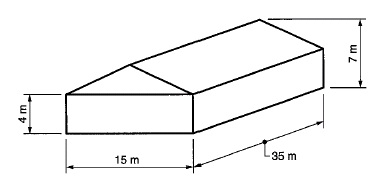
The dimensions are as follows.
- Height from ground to top of gable is 7m.
- The shed (without gable) is 15m wide (35m long x 4m high).
i How much mix is required?
ii How much concentrate will you use?
f) This yard has an infestation of fleas. The dimensions are shown in the diagram.
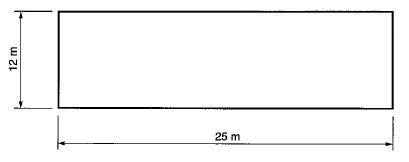
i How much mix is required?
ii How much concentrate will you use?
Question 4:
1. Calculate the following areas and volumes:
a)
i. Formula for the area?
ii. Area (show all workings)
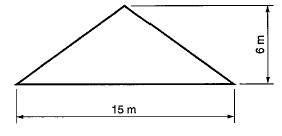
b)
i. Formula for the area?
ii. Area (show all workings)
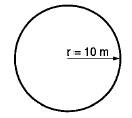
c)
i. Formula for the area of sides?
ii. Area of sides (show all workings).
iii. Formula for volume.
iv. Volume (show working)
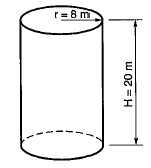
d)
i. Formula for volume.
ii. Volume (show working)
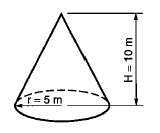
Assignment Problem 3: Site Assessment and Carry out a treatment - Residential
PART 1: Case Study:
Task 1: Obtain access to the site
Describe how you would:
a) Arrange a mutually acceptable meeting with your client.
b) Identify the actual premises requiring treatment.
c) Check to see if you have dealt with this client before.
Task 2: Undertake site inspection
In undertaking the inspection, record the following:
1. How you would undertake the inspection.
2. List three (3) pieces of equipment you may use during the inspection.
3. Type and condition of the buildings and environment.
4. Type of pest, activity level and location of harbourages.
Task 3: Develop and discuss pest management methods
1. Fill out the following table.
- Non-chemical methods must include at least one (1) physical and one (1) cultural control method.
- Chemical methods must state the product name and active ingredient(s) and include at least two (2) different kinds of formulations (e.g. sprays, gels, granules, dusts)
Task 4: Prepare the worksite
1. List three (3) pieces of personal protective equipment you may select for this job.
2. Complete the following risk assessment form below:
3. Explain the purpose of placing out signage and barriers during your treatment.
Task 5: Carrying out the treatment
1. From one of your chosen non-chemical control methods, describe in detail how you undertake this work, including tools, materials and safety concerns.
2. From one of your chosen chemical control methods, describe in detail how you undertake this work, including tools, materials (product names and active ingredients) and safety concerns.
Task 6: Restore Work site and Provide documentation
1. Explain how you would restore the worksite.
2. List three (3) pieces of documentation you would provide to the client.
PART 2: Worksite experience
You now need to find an appropriate premise where you can demonstrate your ability to assess and carry out a cockroach or ant treatment in a residential setting. You will need to be signed off by a licensed pest management technician.
If you are not able to involve yourself in such a treatment at your workplace, you will need to attend one of our practical sessions at Richmond, NSW. Please contact our teaching staff for more information.
Answer the following questions (providing photos were required)
1. How did you establish the identity and density of pest activity? Include photos of at least two (2) pieces of evidence you used to establish the type and extent of pest activity.
2. Describe the building and the surrounding environment, and list any potential harbourage areas and entry points. Include at least two (2) photos demonstrating these areas.
3. List at least three (3) factors contributing to pest activity. Include at least two (2) photos of these factors.
4. List and describe all the non-chemical control methods you undertook or recommended to the client to undertake for this treatment. What safety concerns, if any, would be involved in using these control methods? Include appropriate photos of you undertaking this work (if applicable).
5. List and describe all the chemical control methods you undertook for this treatment. What safety concerns, if any, would be involved in using these control methods? Include copies of the SDS's used (1st page only if sending in via post). Include at least two (2) photos of you applying some of the products chosen.
6. You must also provide copies of all the documentation you completed e.g. Service report/ treatment sheet, pesticide application record, invoice.
It is always advisable to take online assistance from the Life cycles and Harbourages Assignment Help service for precisely completing the university assignment tasks.
Tags: Life cycles and Harbourages Assignment Help, Life cycles and Harbourages Homework Help, Life cycles and Harbourages Coursework, Life cycles and Harbourages Solved Assignments, Density of Pest Activity Assignment Help, Density of Pest Activity Homework Help
Attachment:- Life cycles and Harbourages.rar